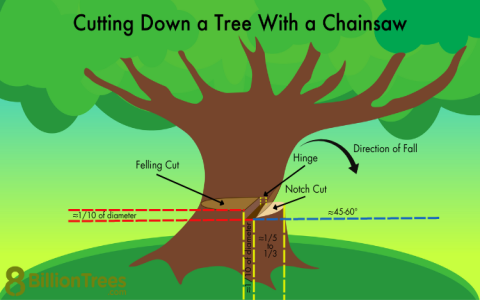Why Girdling a Tree Instead of Cutting It Down
In the world of arboriculture and environmental conservation, the practice of girdling a tree has garnered attention as a sustainable alternative to outright removal. Girdling involves removing a strip of bark around the circumference of a tree, thereby severing its vascular system. This may seem counterintuitive, especially when trees can easily be felled. However, adopting girdling instead of cutting down brings several ecological and aesthetic benefits worth exploring.

One of the primary motivations for girdling a tree lies in the quest for ecological balance. Trees play a critical role in their ecosystems, offering habitat for countless species and contributing to air quality by absorbing carbon dioxide. When a tree is cut down, its entire structure and the wildlife it supports are often destroyed. Girdling allows trees to continue standing while gradually dying, providing a habitat for various organisms during the decomposition process. This slow death contributes to the natural cycle of life, offering a nurturing environment for insects, birds, and fungi that rely on decaying wood.
Moreover, girdling a tree serves as a powerful tool for forest management and preservation. In certain circumstances, it can help maintain an ecosystem’s overall health by controlling the population of specific tree species. For instance, if a non-native or invasive species is encroaching on a forest, girdling can effectively halt its spread without the need for complete removal. This approach minimizes soil disturbance and maintains the integrity of the surrounding vegetation, allowing native species to thrive.
From an aesthetic standpoint, girdling provides options for landscape design. Many homeowners and urban planners wish to retain the visual presence of mature trees while managing their size or preventing further growth. Girdled trees can create canopy space for other plants and flowers or maintain sunlight exposure for adjacent gardens, thereby enhancing the overall beauty of outdoor spaces. As these trees enter their natural decay phase, they transform into natural sculptures, adding to the character of the landscape.
A significant advantage of girdling is its cost-effectiveness. The process is often less labor-intensive than tree cutting, which usually requires special equipment, disposal of the tree remnants, and sometimes permits or inspections. Girdling enables landowners to manage their trees efficiently without considerable financial investment, making it an appealing option, especially for those maintaining vast tracts of land.
Additionally, girdling can prove beneficial for the overall soil health. Standing dead trees, known as "snags," promote the growth of a diverse ecosystem. As they decay, they release vital nutrients back into the soil, which can enrich the surrounding flora. This natural fertilizing process supports healthier growth for remaining trees and plants, establishing a more resilient environment.
However, girdling is not without its challenges. It requires careful consideration and knowledge of tree species, local ecosystems, and the specific goals of land management. Incorrect techniques can lead to untimely tree failures or unintended damage to surrounding plants. Therefore, it’s essential to approach girdling with respect for the environment and to consult with an arborist or forestry expert when necessary.
In essence, the choice between girdling a tree and cutting it down extends beyond a simple decision; it reflects a broader understanding of environmental conservation and landscape management. By girdling, individuals can maintain ecological integrity, support wildlife, and optimize landscape aesthetics while taking cost-effective and sustainable actions. This practice aligns with modern principles of sustainability, helping foster a deeper connection between nature and human activities. The slow demise of a tree through girdling tells a story of life and renewal, emphasizing the beauty of nature’s processes and the role humans can play in preserving it.
In the ever-evolving conversation about our relationship with nature, girdling stands out as a thoughtful alternative, encouraging a more profound respect for the living systems we interact with each day.




